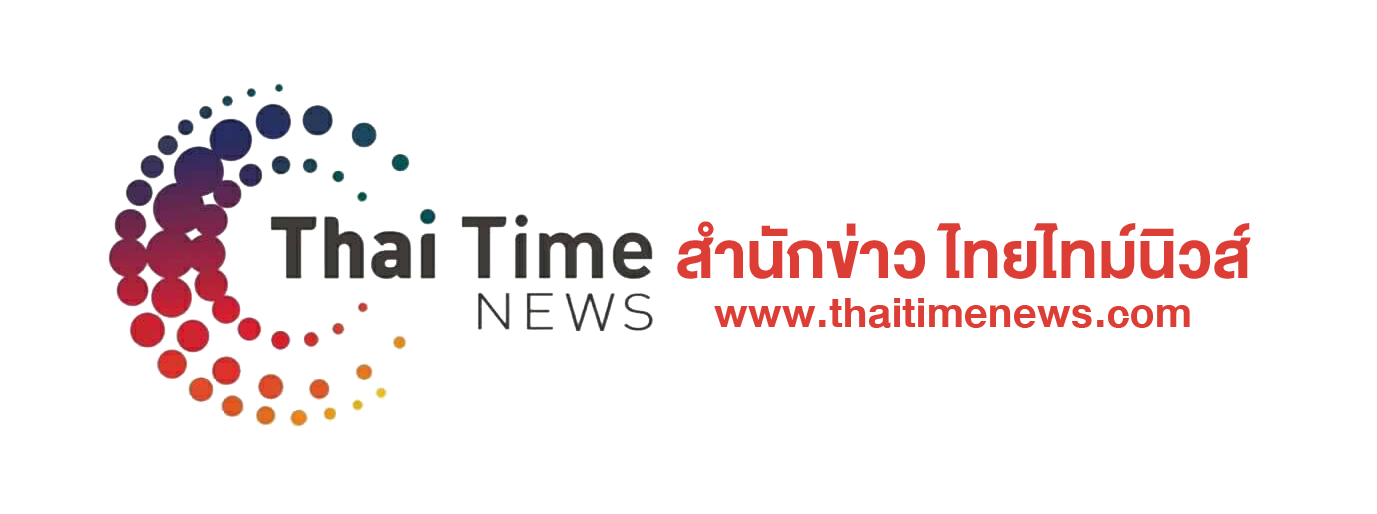ในไตรมาสแรกของปี 2563 เศรษฐกิจไทยหดตัวอย่างหนักจากผลกระทบของการแพร่ระบาดของโรคติดเชื้อไวรัสโคโรนา สายพันธุ์ใหม่ 2019 (โควิด-19) การส่งออกและการนำเข้าสินค้าของไทยลดลงอย่างรุนแรง ขณะที่มาตรการในการควบคุมโรคของหลายประเทศ เช่น การจำกัดการเดินทาง และการปิดเมือง ส่งผลให้จำนวนนักท่องเที่ยวลดลง กอปรกับมาตรการของรัฐในการควบคุมการแพร่ระบาดของโรคโดยการหยุดกิจการชั่วคราวของห้างสรรพสินค้า สถานที่ให้บริการต่าง ๆ สถานบันเทิง รวมถึงการกำหนดมาตรการเคอร์ฟิว (ห้ามออกนอกเคหสถาน) ในช่วงเวลา 22.00 - 04.00 น. ทำให้การบริโภคภาคเอกชนชะลอลงอย่างมาก นอกจากนี้ ไทยยังเผชิญกับปัญหาภัยแล้งที่รุนแรงซึ่งส่งผลกระทบต่อผลผลิตทางเกษตรของไทยอย่างมีนัยสำคัญ
จากผลกระทบดังกล่าว รัฐบาลได้เร่งดำเนินการออกมาตรการต่าง ๆ ทั้งด้านการเงินและการคลังเพื่อผ่อนคลายผลเชิงลบทางเศรษฐกิจโดยเฉพาะประชาชนและผู้ประกอบการในภาคต่าง ๆ ที่ประสบความเดือดร้อนจากการแพร่ระบาดของโควิด-19 ในการนี้ ธนาคารมีความมุ่งมั่นที่จะประคับประคองให้ลูกค้าผู้ประกอบการและประชาชนสามารถผ่านช่วงวิกฤตนี้ไปได้ โดยที่ผ่านมาธนาคารออกมาตรการต่าง ๆ พร้อมทั้งสนับสนุนมาตรการของภาครัฐและธนาคารแห่งประเทศไทย เพื่อดูแลและให้ความช่วยเหลือลูกค้าผู้ประกอบการให้มีเงินทุนและสภาพคล่องเพียงพอในการดำเนินธุรกิจและรักษาการจ้างงาน และช่วยเหลือประชาชนในการลดภาระทางการเงิน เพื่อก้าวผ่านวิกฤตนี้ไปด้วยกัน
ท่ามกลางภาวะเศรษฐกิจที่ท้าทาย ธนาคารกรุงเทพและบริษัทย่อยรายงานกำไรสุทธิสำหรับไตรมาสแรกจำนวน 7,671 ล้านบาท
ไตรมาส 1 ปี 2563 ธนาคารกรุงเทพและบริษัทย่อยมีรายได้ดอกเบี้ยสุทธิเพิ่มขึ้นร้อยละ 15.3 จากไตรมาส 4 ปี 2562 จากการเติบโตของสินเชื่อลูกค้าธุรกิจรายใหญ่ และการเปลี่ยนแปลงการรับรู้รายได้ดอกเบี้ยเงินให้สินเชื่อโดยใช้วิธีอัตราดอกเบี้ยที่แท้จริง (Effective Interest Rate) ทำให้ส่วนต่างอัตราดอกเบี้ยสุทธิของธนาคารอยู่ที่ร้อยละ 2.52 ขณะที่รายได้ค่าธรรมเนียมและบริการสุทธิลดลงร้อยละ 22.4 ส่วนใหญ่ลดลงจากรายได้ค่าธรรมเนียมจากการอำนวยสินเชื่อ สำหรับรายได้จากการดำเนินงานอื่นลดลงจากไตรมาสก่อน สาเหตุหลักจากไตรมาส 4 ปี 2562 ธนาคารมีกำไรสุทธิจากเงินลงทุนจำนวน 14,988 ล้านบาท กอปรกับเครื่องมือทางการเงินประเภทที่มาตรฐานบัญชีฉบับใหม่กำหนดให้วัดด้วยมูลค่ายุติธรรมมีมูลค่าลดลงตามสภาวะตลาดเงินและตลาดทุนที่ได้รับผลกระทบจาก โควิด-19 สำหรับค่าใช้จ่ายจากการดำเนินงานลดลงร้อยละ 28.8 ทั้งนี้ธนาคารตระหนักถึงความสำคัญในการดูแลลูกค้า พนักงานและผู้มีส่วนได้เสียโดยจัดให้มีมาตรการป้องกันและดูแลการติดเชื้อโดยมีการประชุมในระดับฝ่ายจัดการอย่างใกล้ชิดและจัดการปรับเปลี่ยนการป้องกันให้ทันต่อการเปลี่ยนแปลงตลอดระยะเวลานับแต่เกิดเหตุการณ์ดังกล่าว อัตราส่วนค่าใช้จ่ายต่อรายได้จากการดำเนินงานอยู่ที่ร้อยละ 43.1 สำหรับผลขาดทุนด้านเครดิตที่คาดว่าจะเกิดขึ้นสำหรับไตรมาสแรกลดลงมาก เนื่องจากไตรมาสก่อนมีการตั้งสำรองเพิ่มขึ้นเป็นพิเศษเพื่อเสริมสร้างระดับสำรองของธนาคารให้แข็งแรงมากยิ่งขึ้นตามหลักความระมัดระวัง ก่อนการเริ่มใช้มาตรฐานการรายงานทางการเงิน ฉบับที่ 9 (TFRS 9)
ฐานะการเงินและเงินกองทุนของธนาคารอยู่ในระดับที่แข็งแกร่ง
ณ สิ้นเดือนมีนาคม 2563 ธนาคารมีเงินให้สินเชื่อจำนวน 2,115,950 ล้านบาท เพิ่มขึ้นร้อยละ 2.7 จากสิ้นปี 2562 จากการเพิ่มขึ้นของสินเชื่อลูกค้าธุรกิจรายใหญ่และสินเชื่อกิจการต่างประเทศ ซึ่งเป็นไปตามประมาณการที่คาดไว้ตั้งแต่ปลายปีก่อน สำหรับอัตราส่วนเงินให้สินเชื่อที่มีการด้อยค่าด้านเครดิตต่อเงินให้สินเชื่อรวมอยู่ที่ร้อยละ 3.5 ขณะที่เงินสำรองของธนาคารยังคงอยู่ในระดับแข็งแกร่งที่ร้อยละ 203.9 ของเงินให้สินเชื่อที่มีการด้อยค่าด้านเครดิต ทั้งนี้ ธนาคารยังคงเคียงข้างและดูแลลูกค้าอย่างใกล้ชิดเพื่อฝ่าวิกฤตในครั้งนี้ นอกจากนี้ ธนาคารยังคงให้ความสำคัญในการดูแลกระบวนการอำนวยสินเชื่อและบริหารความเสี่ยง พร้อมทั้งดำรงค่าเผื่อผลขาดทุนด้านเครดิตให้อยู่ในระดับที่เหมาะสม ซึ่งเป็นไปตามแนวทางการดำเนินธุรกิจด้วยความระมัดระวังทั้งในภาวะเศรษฐกิจปกติและภาวะถดถอย
ธนาคารยังคงรักษาเงินกองทุนและสภาพคล่องให้อยู่ในระดับที่แข็งแกร่ง ณ วันที่ 31 มีนาคม 2563 ธนาคารมีอัตราส่วนเงินให้สินเชื่อต่อเงินรับฝากอยู่ที่ร้อยละ 84.2 ขณะที่อัตราส่วนเงินกองทุนทั้งสิ้น อัตราส่วนเงินกองทุนชั้นที่ 1 ที่เป็นส่วนของเจ้าของ และอัตราส่วนเงินกองทุนชั้นที่ 1 ต่อสินทรัพย์เสี่ยงของธนาคารและบริษัทย่อยอยู่ที่ร้อยละ 18.5 ร้อยละ 15.7 และร้อยละ 15.7 ตามลำดับ ซึ่งอยู่ในระดับที่สูงกว่าอัตราส่วนเงินกองทุนขั้นต่ำตามที่ธนาคารแห่งประเทศไทยกำหนด
การนำมาตรฐานกลุ่มเครื่องมือทางการเงินฉบับใหม่มาถือปฏิบัติ
ธนาคารและบริษัทย่อยได้นำมาตรฐานกลุ่มเครื่องมือทางการเงินฉบับใหม่ (ฉบับที่ 9) มาถือปฏิบัติกับงบการเงินสำหรับรอบระยะเวลาบัญชีตั้งแต่วันที่ 1 มกราคม 2563 เป็นต้นไป โดยไม่ปรับงบการเงินเปรียบเทียบย้อนหลัง การเปลี่ยนแปลงที่สำคัญ ได้แก่ การจัดประเภทและการวัดมูลค่าสินทรัพย์และหนี้สินทางการเงิน การคำนวณการด้อยค่าของสินทรัพย์ทางการเงินโดยใช้ผลขาดทุนด้านเครดิตที่คาดว่าจะเกิดขึ้น (Expected Credit Loss) และการบัญชีป้องกันความเสี่ยง
++++++++++++++++++++++++++++++++++++++
Bangkok Bank reports net profit of Baht 7,671 million for first quarter 2020
In the first quarter of 2020, the Thai economy contracted sharply due to the effects of the Coronavirus (COVID-19) pandemic and a drastic decline in Thai exports and imports. The pandemic containment measures implemented by many countries around the world, such as travel restrictions and lockdowns, have led to a significant drop in the number of inbound tourist arrivals. Furthermore, the Thai government’s containment efforts by closing shopping centers, service providers, and entertainment venues, as well as enacting a nationwide curfew from 10:00 pm to 4:00 am, have resulted in a steep decline in domestic consumption. At the same time, Thailand has been experiencing a severe drought which is significantly weighing on agricultural production.
Due to the above mentioned impacts, the Cabinet has launched a series of financial and fiscal relief measures to mitigate the negative economic impact on individuals and businesses in the sectors most affected by the COVID-19 outbreak. The Bank is also committed to helping entrepreneurs and the public overcome this crisis by issuing its own various measures as well as supporting those from the government and the Bank of Thailand. These measures enable the Bank to look after and assist affected companies so they can have sufficient funds and liquidity to operate their businesses and maintain employment, as well as help affected people reduce their financial burden and get through this crisis together.
Amid challenging economic conditions, Bangkok Bank delivered first quarter net profit of Baht 7,671 million
The Bank’s net interest income for the first quarter of 2020 increased by 15.3 percent from the previous quarter due to corporate loan growth and the change in recognition of interest income from loans using the effective interest rate (EIR) method. These factors saw the net interest margin stand at 2.52 percent. Net fees and service income decreased by 22.4 percent predominantly due to lower fees from loan-related services. The Bank’s other operating income declined mainly from the high base achieved in the fourth quarter of 2019 due to a one-off gain on investment of Baht 14,988 million as well as from new accounting standards on financial instruments measured at fair value whose valuation was affected by the unprecedented COVID-19 outbreak which resulted in poor market conditions. The Bank’s operating expenses decreased by 28.8 percent. The Bank has introduced safety and protection measures for customers, employees and other stakeholders, whose health, hygiene and wellbeing are its priority, whereby regular management meetings have been convened to promptly manage and adjust the measures since the early days of COVID-19. The cost-to-income ratio stood at 43.1 percent. The expected credit loss sharply decreased as the Bank set aside a one-off higher provision in the previous quarter to strengthen the loan loss reserves before the adoption of the Thai Financial Reporting Standard No.9 (TFRS 9).
Bangkok Bank posts a healthy balance sheet and strong capital position
At the end of March 2020, the Bank’s total loans amounted to Baht 2,115,950 million, an increase of 2.7 percent from the end of 2019, due to an increase in large corporate and international lending and in line with the pipeline projections at the end of last year. The ratio of non-performing loan (NPL) was 3.5 percent with the strong loan loss reserves to NPL ratio at 203.9 percent. The Bank continues to assist customers and support them through the COVID-19 crisis, while strengthening loan portfolio quality through robust control of credit underwriting and risk management and maintaining the allowance for doubtful accounts at a prudent level. This is in line with the Bank’s conservative business management approach under both normal economic conditions and recession.
The Bank’s financial position remained healthy with a strong capital base and ample liquidity position. At the end of March 2020, the loan to deposit ratio was 84.2 percent. The total capital adequacy ratio, Common Equity Tier 1 capital adequacy ratio and Tier 1 capital adequacy ratio of the Bank and its subsidiaries were 18.5 percent, 15.7 percent and 15.7 percent respectively, comfortably above the Bank of Thailand’s minimum capital requirements.
Implementation of new financial reporting standards (Group of financial instruments)
The Bank and its subsidiaries adopted TFRS 9 from January 1, 2020 onwards, without restating previous financial statements. The significant changes in principle can be summarized into classification and measurement of financial assets and liabilities, calculation of impairment using the concept of expected credit loss, and hedge accounting.



















